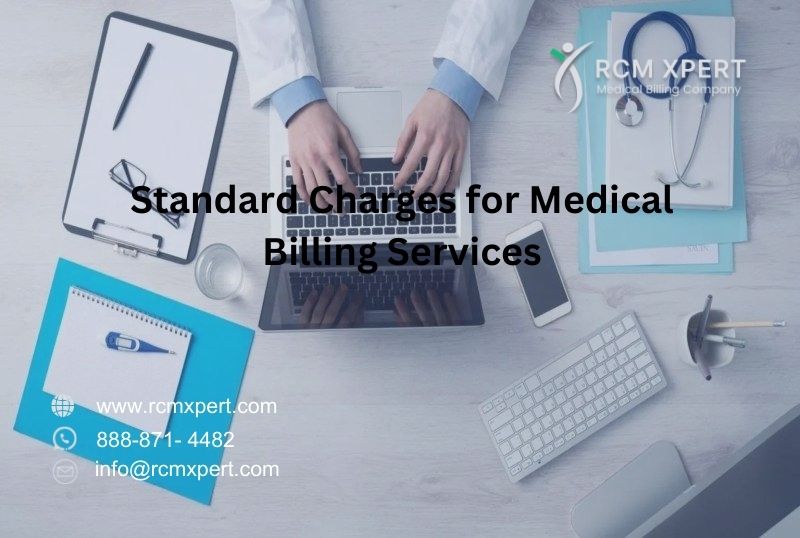In the complex world of healthcare, understanding the costs associated with medical billing services can be as challenging as diagnosing a rare condition. Whether you’re a healthcare provider looking to outsource your billing or a patient trying to make sense of your medical bills, knowing the standard charges for medical billing services is crucial. Let’s dive into this topic and unravel the mysteries of medical billing costs.
The Basics of Medical Billing Services
Before we jump into pricing specifics, it’s essential to understand what medical billing services entail. Medical billing is submitting and following up on claims with health insurance companies to receive payment for services rendered by healthcare providers. This process involves:
- Collecting patient information
- Verifying insurance coverage
- Coding medical procedures and diagnoses
- Submitting claims to insurance companies
- Following up on unpaid claims
- Managing denials and appeals
Now that we have a clear picture of what’s involved, let’s explore the various pricing models used in the industry.
Common Pricing Models for Medical Billing Services
Percentage of Collections
The most common pricing model in the medical billing industry is the percentage of collections. Under this model, the billing service charges a percentage of the total amount collected from insurance companies and patients. Typically, this percentage ranges from 5% to 10% of the collected revenue.
Factors Affecting Percentage Rates
- Specialty: Some medical specialties, like anesthesiology or radiology, may have higher percentages due to the complexity of their billing.
- Practice Size: Larger practices might negotiate lower percentages due to higher volume.
- Claim Complexity: Practices with more complex claims may see higher percentages.
Per-Claim Pricing
Another popular model is per-claim pricing. In this structure, the billing service charges a flat fee for each submitted claim, regardless of its value or whether it’s successfully collected.
Typical Per-Claim Fees
- Simple Claims: $4 to $6 per claim
- Complex Claims: $7 to $12 per claim
Hourly Rate
Some medical billing services charge an hourly rate for their work. This model is less common but can be beneficial for practices with irregular billing needs.
Average Hourly Rates
- Junior Billers: $15 to $25 per hour
- Experienced Billers: $30 to $50 per hour
- Certified Coding Specialists: $40 to $70 per hour
Breaking Down the Costs: What’s Included?
When considering the charges for medical billing services, it’s important to understand what’s included in the price. Most comprehensive medical billing services cover:
- Claim Submission
- Payment Posting
- Denial Management
- Patient Billing
- Reporting and Analytics
Additional Services and Their Costs
Some services may come at an extra cost. These can include:
- Credentialing: $500 to $1,500 per provider
- EHR Integration: $1,000 to $5,000 (one-time fee)
- Custom Reporting: $100 to $500 per month
Factors Influencing Medical Billing Service Charges
Several factors can impact the overall cost of medical billing services:
Practice Specialty
Different medical specialties have varying levels of complexity in their billing processes. For instance:
- Primary Care: Generally lower rates due to simpler billing
- Surgery Centers: Higher rates due to complex procedures and coding
- Mental Health: May have unique billing requirements, affecting costs
Practice Size and Volume
The size of your practice and the volume of claims can significantly influence pricing:
- Small Practices: May face higher percentage rates but lower overall costs
- Large Practices: Can often negotiate better rates due to high volume
Geographical Location
Where your practice is located can affect billing service charges:
- Urban Areas: Generally higher rates due to increased operating costs
- Rural Areas: May have lower rates but fewer service options
Technology Integration
The level of technology integration required can impact costs:
- Cloud-Based Solutions: Often more affordable and easier to implement
- Legacy System Integration: May require additional fees for compatibility
Hidden Costs to Watch Out For
When evaluating medical billing services, be aware of potential hidden costs:
- Setup Fees: One-time charges for onboarding and system setup
- Minimum Monthly Fees: Some services require a minimum monthly payment
- Contract Termination Fees: Charges for ending the service before the contract term
- Additional Software Fees: Costs for necessary software licenses
DIY vs. Outsourcing: A Cost Comparison
Many healthcare providers wonder if it’s more cost-effective to handle billing in-house or outsource it. Let’s break down the costs:
In-House Billing Costs
- Salary for Billing Staff: $35,000 to $50,000 per year per full-time employee
- Software and Hardware: $5,000 to $20,000 initial investment, plus ongoing maintenance
- Training and Continuing Education: $1,000 to $3,000 per year per employee
Outsourced Billing Costs
- Percentage of Collections: 5% to 10% of collected revenue
- No additional costs for staff, software, or training
For many practices, especially smaller ones, outsourcing can be more cost-effective when considering all the hidden costs of in-house billing.
How to Negotiate Better Rates for Medical Billing Services
If you’re looking to secure better rates for medical billing services, consider these strategies:
- Bundle Services: Many providers offer discounts for bundled services
- Long-Term Contracts: Committing to longer terms can often lead to better rates
- Performance-Based Pricing: Negotiate rates based on collection performance
- Volume Discounts: If you have a high volume of claims, use this as leverage
The Future of Medical Billing Service Pricing
As technology continues to advance, we’re seeing shifts in how medical billing services are priced:
AI and Automation
Artificial intelligence and automation are streamlining the billing process, potentially leading to lower costs in the future.
Value-Based Care Models
The shift towards value-based care may impact how billing services are priced, with a focus on outcomes rather than volume.
Transparency in Pricing
There’s a growing demand for transparency in healthcare pricing, which may lead to more straightforward billing service pricing models.
Conclusion: Finding the Right Balance
Understanding the standard charges for medical billing services is crucial for healthcare providers looking to optimize their revenue cycle management. While costs can vary widely based on numerous factors, the key is to find a service that offers a balance between affordability and quality.
When evaluating medical billing services, consider not just the immediate costs but also the potential for increased revenue through improved collection rates and reduced billing errors. Remember, the cheapest option isn’t always the most cost-effective in the long run.
By thoroughly understanding the pricing models, included services, and potential hidden costs, you can make an informed decision that benefits both your practice and your patients. In the ever-evolving landscape of healthcare, staying informed about medical billing costs is not just good business it’s essential for providing quality care.





